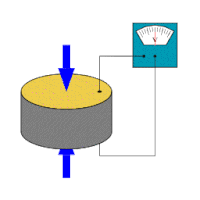
Photo from wikipedia
The demand for interfacing electronics in everyday life is rapidly accelerating, with an ever-growing number of applications in wearable electronics and electronic skins for robotics, prosthetics, and other purposes. Soft… Click to show full abstract
The demand for interfacing electronics in everyday life is rapidly accelerating, with an ever-growing number of applications in wearable electronics and electronic skins for robotics, prosthetics, and other purposes. Soft sensors that efficiently detect environmental or biological/physiological stimuli have been extensively studied due to their essential role in creating the necessary interfaces for these applications. Unfortunately, due to their natural softness, these sensors are highly sensitive to structural and mechanical damage. The integration of natural properties, such as self-healing, into these systems should improve their reliability, stability, and long-term performance. Recent studies on self-healing soft sensors for varying chemical and physical parameters are herein reviewed. In addition, contemporary studies on material design, device structure, and fabrication methods for sensing platforms are also discussed. Finally, the main challenges and future perspectives in this field are introduced, while focusing on the most promising examples and directions already reported.
Journal Title: Advanced materials
Year Published: 2021
Link to full text (if available)
Share on Social Media: Sign Up to like & get
recommendations!